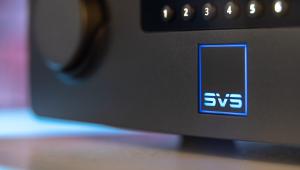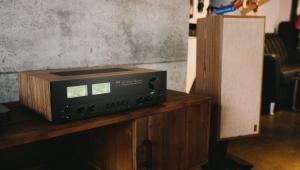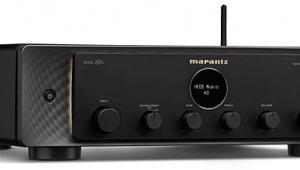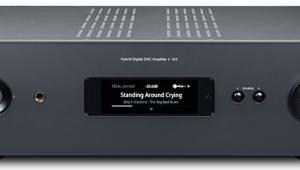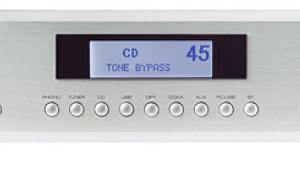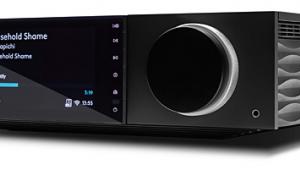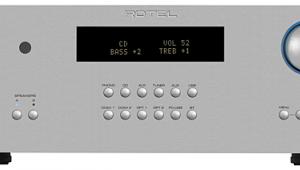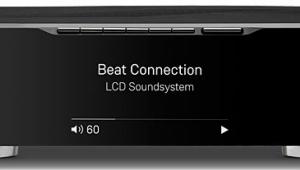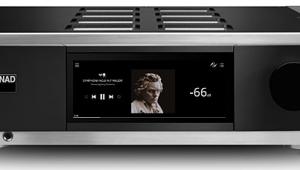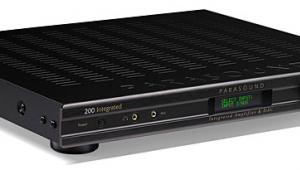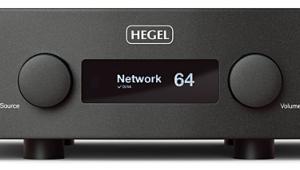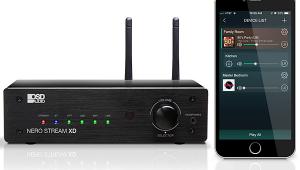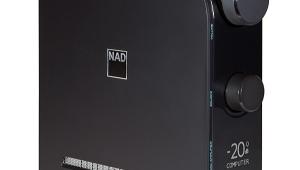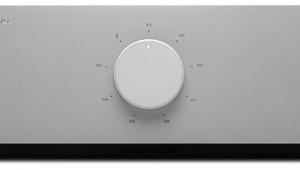Wadia Digital Intuition 01 Integrated Amplifier-DAC Page 2
In a very different vein, a track like “What I Do” (96/24 FLAC) from Donald Fagen’s Morph the Cat album showed the Wadia to have power to spare to drive my Energys, a moderately power-hungry, slightly challenging loudspeaker load, to rock-satisfying levels. Fagen always mixes with a lot of low end, and this track was sinfully rich in the 40-to-80-hertz octave, but never blousy or loose. I could easily identify this as a hi-rez rendering by focusing on the ride cymbal; it was meringue-airy without a trace of grain or sizzle.
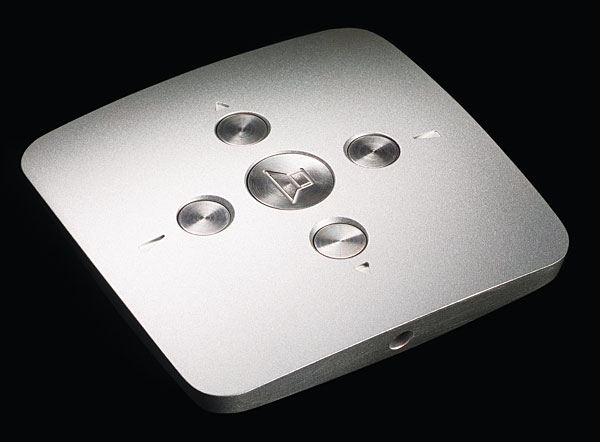
But I really sat up and took notice when I began fooling around with DSD files via a few freeware/trialware online sources. DSD—Direct Stream Digital—of course, is the massively oversampled 1-bit digital audio format trademarked by Sony and Philips for the Super Audio CD format a couple decades ago. It’s long been favored by some musicians and production pros as the best digital option for recording and archiving audio and is now discovering a sort of second life among computer audiophiles and specialty small/audiophile-label download purveyors. I will here go on record as saying I don’t believe there’s any magic 1-bit bullet to the DSD format, nor that there’s anything to the “PCM stress-reaction” folk tales; simply that some music downloads available in DSD format sound particularly good.
Being both penurious and cheap by nature, I surfed around and found a generous handful of free samples. Among the first DSD files I played (via iRiver’s powerful but opaque and still somewhat buggy Mac OSX beta of its Media Manager program) was the first movement of the Mozart D-major K.218 violin concerto, courtesy of Norwegian-label 2L Records. (If you’re looking for great-sounding recordings—disc or download—look no further than their Website: 2L.no.) I noted exceptionally good overall sound quality right away, but when the cadenza came along (the violin-solo improvisation-like section toward the end), I heard a purity of violin tone, particularly of the highest notes, played via harmonic stops on the E-string, that I’d rarely if ever encountered from my system. I wasted little time in downloading most of the rest of 2L’s generous free-download DSD files (DSD music files are big: Have plenty of hard-disk space on hand). I was rewarded with gems like “The Children’s Overture” for symphonic band by 20th-century French composer Eugène Bozza, a hugely colorful work that reproduced with astonishing dynamic clarity, purity of tone, and deep, grainless hall sound.
Now then, anyone whose mind takes a scientific bent (and I flatter myself as being among this cohort) will protest that this proves nothing, except that well-recorded material sounds better than indifferent stuff, which is undeniable. But I will surrender to subjectivity far enough at least to assert that the best DSD recordings, via Wadia’s Intuition 01, made my bare-bones two-channel setup sound as good as I’ve heard it—maybe better.
Ergonomics
The Intuition 01’s terrific sound quality is beyond dispute; its user-friendliness is more open to discussion. The only commands to which the Wadia responds are volume up/down and input-select up/down. The unit’s front panel conceals the two pairs of up/down pushbuttons that operate these behind a black fabric scrim that stretches the full width of its forward “mouth,” screening as well the large LED display in the center. Bright white pinpoint LEDs locate each button. It’s a dramatic, eye-catching (and need I say Italian?) design, and one I quite liked looking at; but I had to wonder how long it might take before the fabric over the push-buttons gets stretched out and saggy. Additionally, I found the overhang of the top and bottom covers to make pushing the buttons a bit awkward unless the Intuition is on a fairly high shelf.

The LED readout is big, bright, and readable, but the only data it reads is volume setting (1 to 100), for about 9 seconds following a change (there are half-steps, but they don’t display), and input name, followed by incoming sample frequency, each for about five seconds and again only following an input change. The rest of the time the fascia shows just the LED pips locating the buttons and a cluster in the center functioning as a pilot light. There’s no dimming function—and the display is wickedly bright in a dim room—nor is there any on/off or sleep function other than a master-power switch on the back panel.
There’s no iDevice dock or hookup, nor Bluetooth or AirPlay wireless capabilities—understandable in so high-end a product, but even ’philes occasionally have parties. Another notable absence is that of a headphone output: There is none, which seems curious. Nor is there any digital or even analog output to pass signal along to a headphone or other external amplifier, nor any provision for using a subwoofer.
The remote controller Wadia supplies with the Intuition is a sculpture in its own right, stunningly carved, or at least CNC-machined, out of billet aluminum. Four buttons duplicate the front-panel pairs, while a larger, centered one delivers Mute, a function absent from the front panel. Unfortunately, designer looks do not an ergonomic controller make: The Intuition’s is heavy, and worse, its square, symmetrical shape means that in a dim setting, you simply cannot tell which way to aim the damned thing unless you look or feel for the small infrared eye present on one of its four otherwise-indistinguishable front edges. What’s more, IR power is modest, demanding some care in aiming—especially if you’re standing above or sitting below the plane of the unit’s shelf, as the unit’s overhanging top and bottom clamshells effectively shadow its IR receiver a bit. For my money, Wadia could just as well have supplied an 89¢ card-type remote and knocked a couple hundred off the overall price.
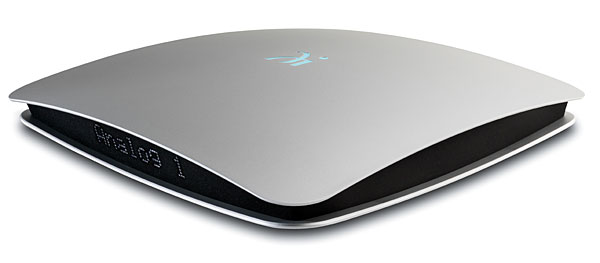
OK, rant-mode off. Much as I’d like to deconstruct the exceptional listening I experienced from Wadia’s unique switching amplifier, I can’t. Wadia, at least via its Web presence, is singularly unforthcoming about whatever digital and analog magic is contained within the Intuition 01. We know that it employs an ESS ES9018 32-bit digital-to-analog converter, the current darling of high-end digital-audio geeks, and uses Wadia’s own Delta-SigMaster 1.5-megahertz upsampling digital-filter topology, but that’s about it other than a few bare-bones specs, a reference to the Intuition’s Class D amplifier topology, and one to its high efficiency. Ordinarily, I’d take the thing apart and find out, but the Intuition’s unusual construction—the only access appears to be via a round port in the bottom clamshell—gave me pause. So with a timidity I can only blame on a $7,500 price tag, I let discretion remain valor’s better part.
In the end, of course, it doesn’t matter: Wadia’s one-piece solution sounds very good even with analog signals passed from an iPod (I tried), and superbly good with hi-rez recordings via USB. Whether or not it sounds $7,500 good is not for me to say, but if I could keep the Intuition 01 around indefinitely for old-school two-channel listening, I certainly would.

